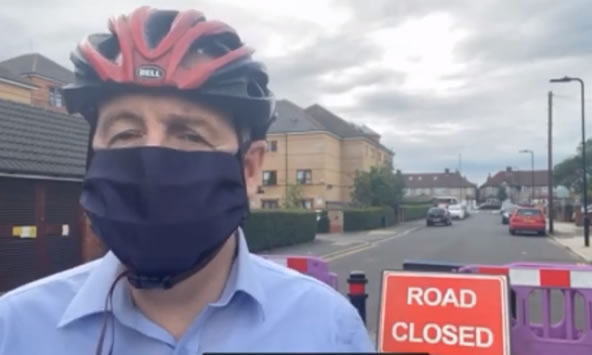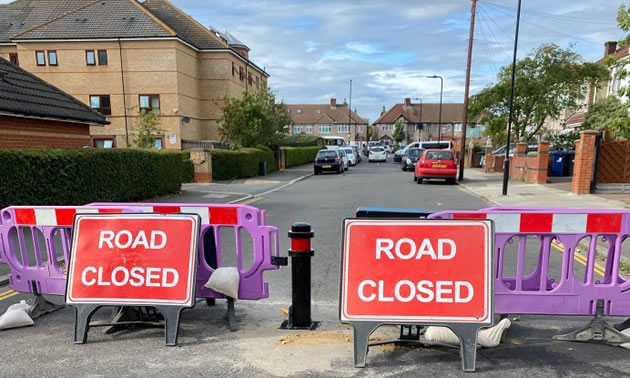2,000 Sign Petition Against Low Traffic Neighbourhood Plans
Demand made for consultation before schemes are implemented

Cllr Julian Bell at the new LTN in Northolt
A petition set up by an Ealing resident in opposition to the council’s implementation of Low Traffic Neighbourhoods (LTNs) has been signed by over 2,000 people.
Started by Lorna Malone the petition is objecting to the way that the LTNs are being implemented by the council rather than the overarching objectives of reducing traffic and improving the environment.
It demands an opportunity for residents to be consulted on the final designs of schemes in their area.
The claim is made that, in the current proposals for a number of schemes across the borough, the closure of local distributor roads will divert traffic onto narrower, quieter residential roads.
It is also stated that the way in which the LTNs have been imposed, through Experimental Traffic Orders (ETOs) which allow for a seven day notification period only and then a six month trial when the schemes are live, is undemocratic and non-transparent with both residents and councillors claiming that details of the plans have been difficult to obtain. The petition states, “We believe this lack of transparency has created much fear and anger in people. “
Concerns are also expressed about the how the schemes might affect emergency service access to these areas.

LTN at Adrienne Avenue, in Northolt
They ask that the council share the scheme’s objectives and the timelines of planned implementation with maps of all the impacted areas. In addition they want to see the existing traffic data for the roads likely to be affected with published success criteria and measurements of pre- and post-trial.
The first LTN has already been implemented at Adrienne Avenue, in Northolt in Greenford Broadway ward.
Julian Bell, leader of Ealing Council said, “Residential streets should be for local people to enjoy, not for vehicles speeding through to avoid congestion on the main roads.
“The introduction of LTNs across the borough can be really effective in cutting this kind of traffic and ensuring that our local neighbourhoods are quieter and more pleasant for walking and cycling, which are proven to be significantly beneficial for physical and mental wellbeing.
“Less traffic means less air pollution from vehicles, reduced CO2 emissions and improved air quality, and this is vital for our ongoing commitment to tackle the climate emergency.
“Our LTNS are very much designed to be a collaboration with local people. Ealing is one of a number of boroughs in London that is introducing LTNs rapidly along with other measures to help support active travel to support a green recovery from COVID-19.
“The total funding awarded to Ealing for active travel schemes – pavement widening, temporary cycle lanes, low traffic neighbourhoods and school streets – is now in excess of £1m.”
He defended the use of ETOs as they enable measures to be introduced quickly during the crisis and pointed out that there will be full statutory consultations held after the operation of the scheme for six months.
He added that residents will be informed a week in advance of the introduction of an LTN in their neighbourhood and will be written to by the council to make them aware of the scheme.
July 28, 2020